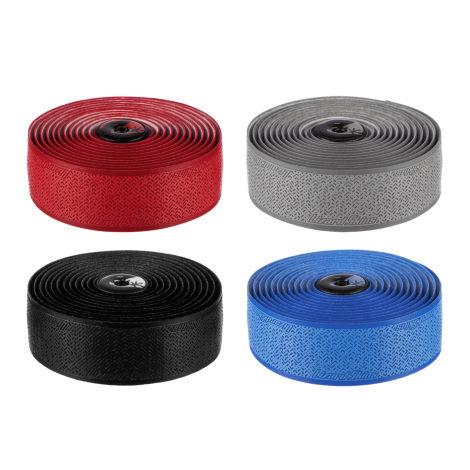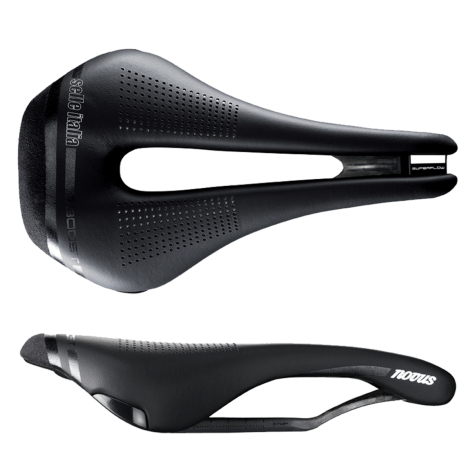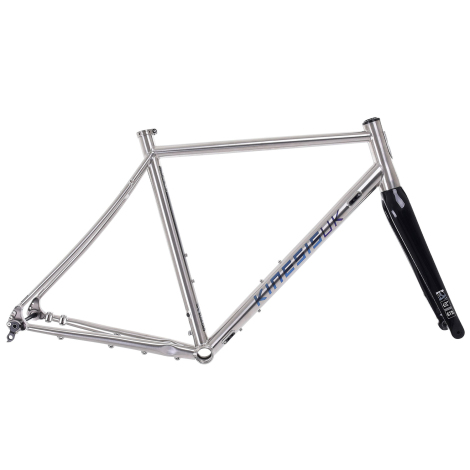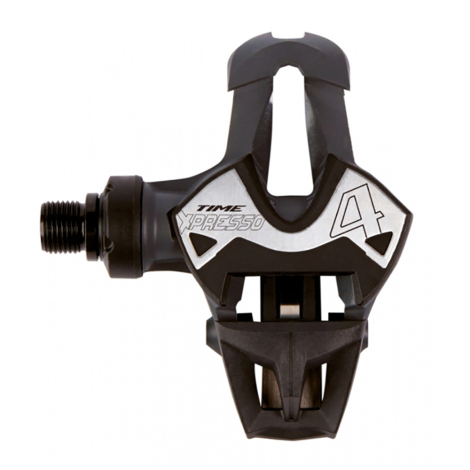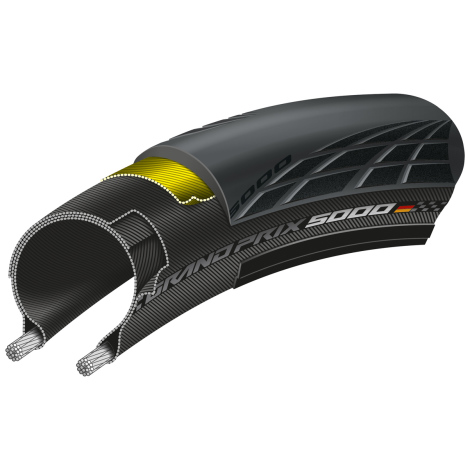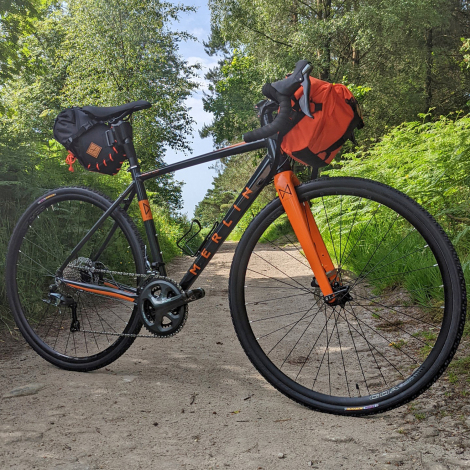While all bike manufacturers tell us their frames are laterally stiff (side to side) and vertically compliant (absorbing shocks and road vibrations), the condition of many roads, especially here in the UK, can easily test the limits of vertical compliance. So how can we stay comfy riding on rough roads?
While clothing can help alleviate issues with padding on contact points (mitts, Shorts pad, insoles) there are a wide range of component choices which can help deliver more comfort.
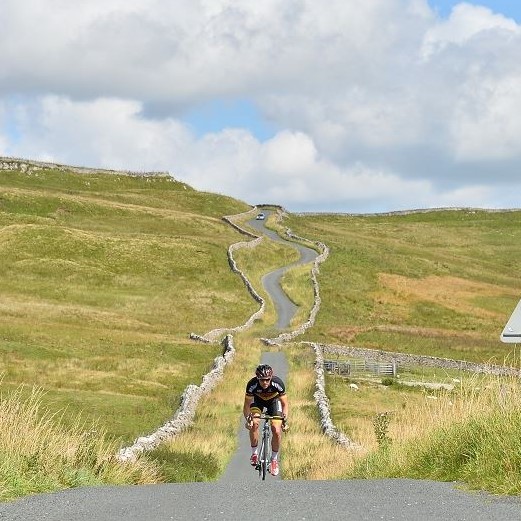
Thicky Tape
Plush, padded bar tape can give an extra bit of comfort over worn, well-used tape. Learn from the pro’s – in races over rougher terrain, they sometimes use double wrapped bars for extra comfort. Double wrapping bars can also give a more natural grip for those with bigger hands. Alternatively, there is a wide range of thicker bar tapes available. Lizard Skin DSP range includes various levels of padded plushness up to a whopping 4.6mm thick (below). Gel pads can also be fitted under the bar tape to absorb road shock and dampen vibration.
Plush Chair
Every rider finds a different level of comfort in every saddle. There are no set rules. We all have different width sit bones and different levels of sensitivity in that area. The style of rider we are and type of events we may indulge in, also guide our choices. Luckily, to keep everyone happy, there are a broad range of saddles available. Saddles are designed for a wide range of bike riders and types of riding. Saddle comfort is not only down to the specific saddle either: Seat height, fore and aft positioning on the post and angle of the top of the seat also come into play. The padding in your shorts can also have a large effect on the comfort of your saddle. Short pads need to protect not just for the sit bones, but to the whole ‘under carriage’ area. Riding too upright, or too stretched out, can also make saddles uncomfortable. Adjusting the ‘fore’ and ‘aft’ position of the saddle or changing stem length can help with this. Our ‘How to choose the correct size road bike’ blog could also help – read it here.
Say No to Sore Ar*e
Riding style can also effect saddle comfort: If you never ride out of the saddle, this can create discomfort from constant pressure over extended periods of time. Get into the habit of getting out of the saddle every now and again to relieve pressure in the sitting area. Altering your position on the saddle can also help alleviate issues, shifting back slightly for seated climbs and moving forward slightly on the saddle when pedalling faster, may reduce discomfort caused by sitting in the same position all of the time.
Banish Bad Vibes
Construction materials used in components can also offer benefits in terms of comfort. Carbon seatposts and bars can help reduce road ‘buzz’ and improve comfort through absorbing some road vibration. All frames are not created equal in terms of comfort, different frame materials and grades of materials used offer varying levels of comfort. This is worth bearing in mind when it comes time to replace your frame / bike. The move towards thinner seat stays and wider wheels and tyres, generally increase comfort for most riders.
Float Around
Some pedal designs allow more ‘float’ than others. Float is the amount that the foot can move while being engaged in the pedal. Allowing more movement is good for comfort and allows knees, hips and ankles to move on a slightly altered plane. When fitting cleats the general rule is that the ball of the foot should over the pedal axle and located centrally over the pedal axle. When setting up new pedals and shoes, it is useful to do it on a home trainer – it’s much easier to pedal and keep hopping off to adjust. Speedplay pedals allow float from zero up to 15 Degrees, enabling most riders to be able to find a comfortable, natural foot position.
Armchair Ride
Wider tyres and wheels can offer vastly improved all round comfort, transforming the ride qualities of your bike. If you ride a fairly stiff carbon bike and have your 23mm tyres at the recommended pressures, you could well be getting bashed around needlessly over rougher roads. If you spend a lot of time riding on poorly maintained roads, the larger volume of air-cushioning between the rider and the road surface is great for improving comfort. 25 or even 28mm tyres on 25mm wide rims, at slightly lower pressures can work wonders for your comfort, as well as your ability to keep riding for longer before fatigue sets in..
Gravel Smoothie
Even without gravelly trails to venture along, there is a lot to be said for riding a gravel bike on the road. The comfy, relaxed riding position and fat tyre capability, together represent attractive ride characteristics for a leisurely long bike ride. While fatter tyres soak up most road imperfections with ease, the added benefit of disc braking for predictable stopping performance, makes it even more tempting. Riding a gravel bike on long road rides is a great excuse to take it easy, or even stay out longer & take the dirty route home…
Check out our Gravel bikes here

